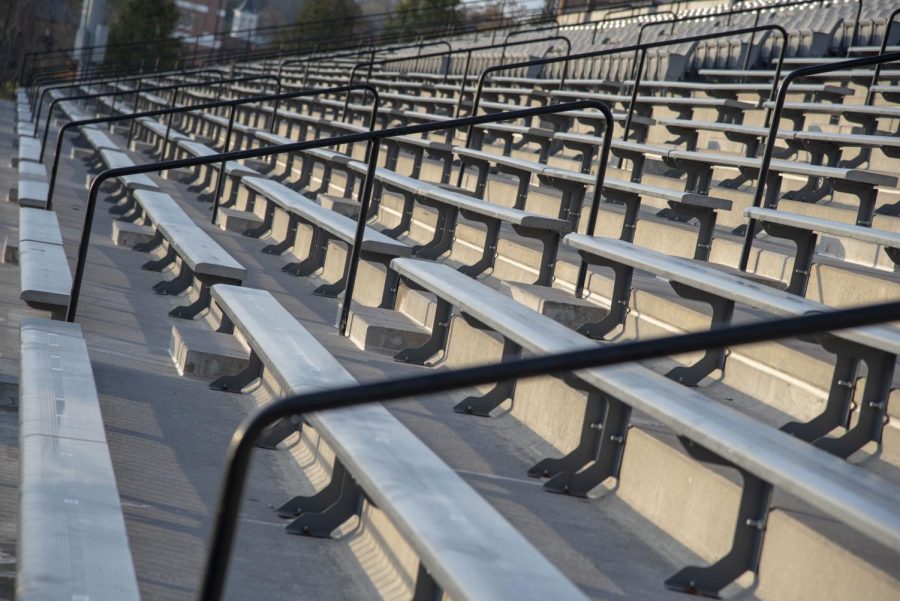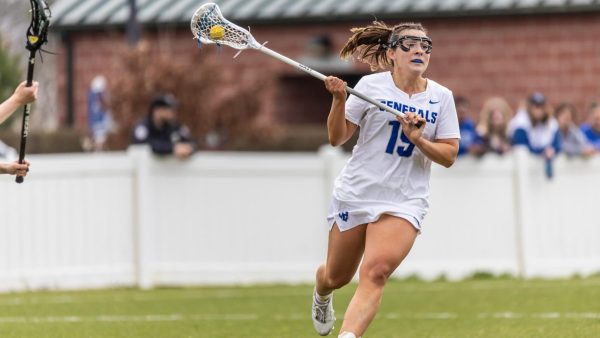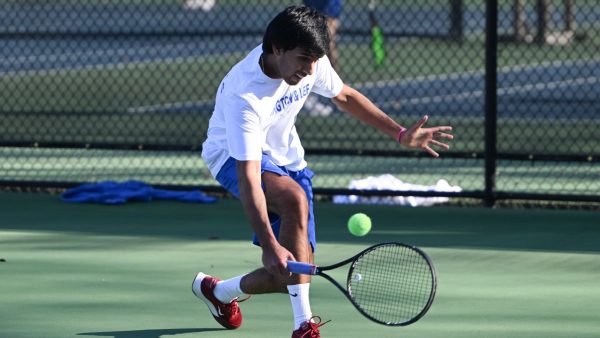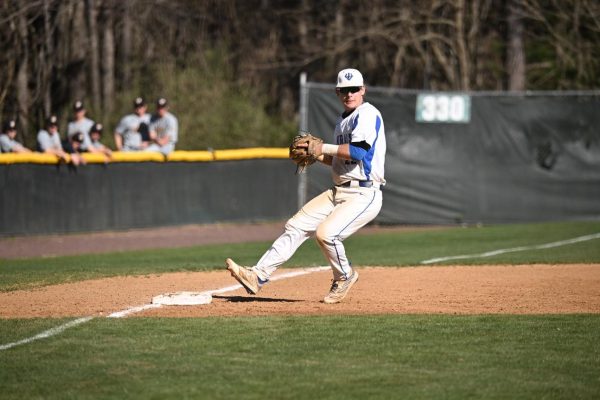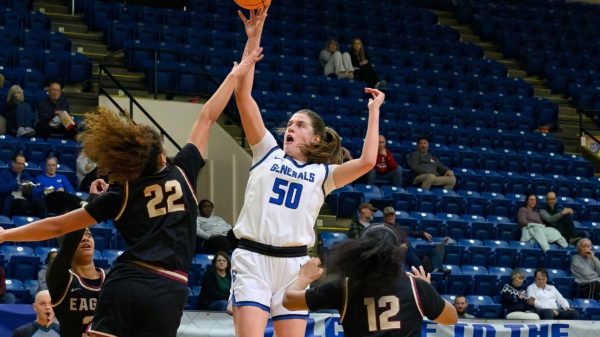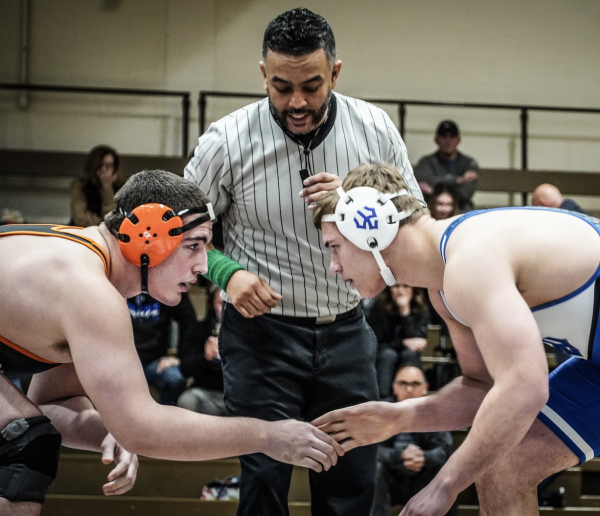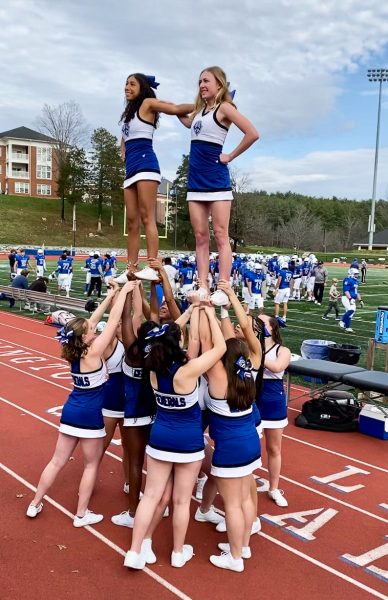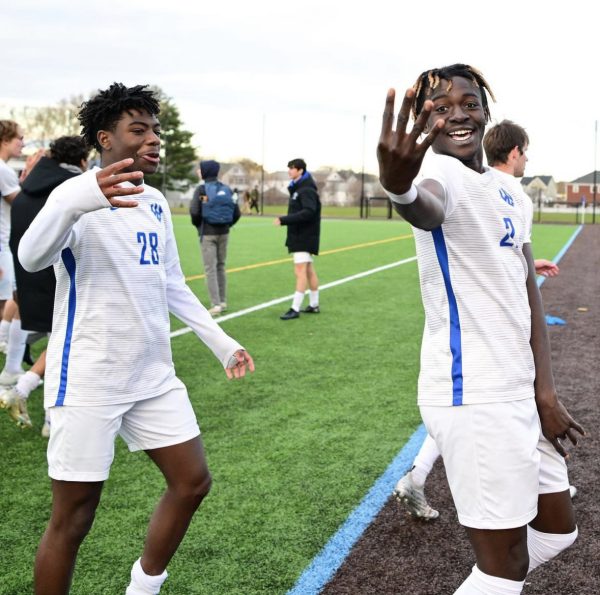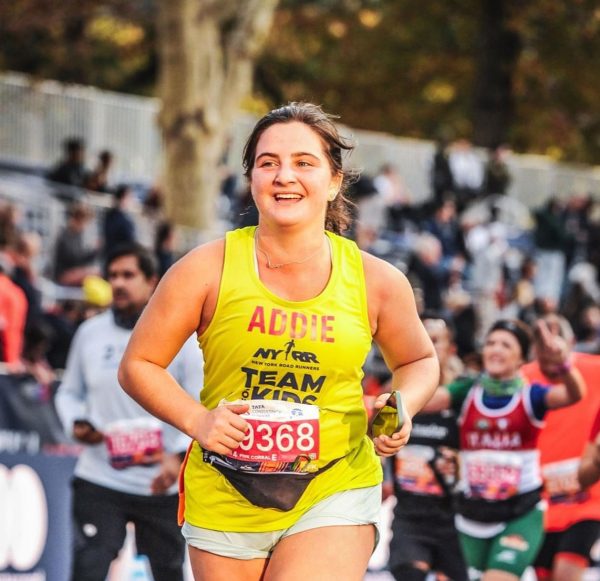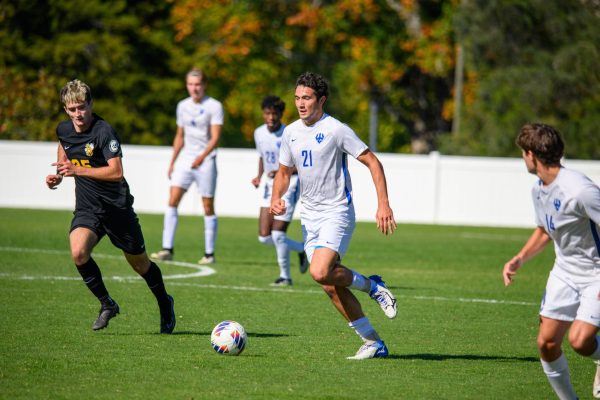What’s Gennies Win Day without the fans?
Student athletes are often the ones to show up for other student athletes at their games
November 6, 2019
During the 2018-19 athletic season, 11 of the 24 varsity teams were conference champions.
Multiple teams and individuals progressed to success at the regional and national levels.
But what happens when no one is there to cheer them on in the stands?
“I go when I have the time,” said Emma Aldrich, ’22. “I have only been to one [football] game this year, though.”
Journalism professor Kevin Finch has been the voice of the Generals football team as the PA announcer for the past six seasons. It’s given him a bird’s-eye view of what it looks like when few fans are there to cheer on the team from the bleachers.
“I wish it were better,” Finch said. “Students complain that there is not much to do here, but there’s an amazing amount of sport games to attend.”
There’s a host of reasons why students don’t attend sports events, such as homework, time constraints or not being able to find a friend who’s available to go with.
But what not everyone realizes is that this can have a domino effect.
“I enjoy watching sports,” said Matt Majoy, ’23. “I would go [to more games] if I knew everyone else was going, if we made it into a school-wide thing.”
Those at the forefront of cheering on the Generals are other student athletes, like the cross-country team that sits together in the football stands.
“I do go to the football games,” said Carolyn Todd, ’23. “We go as a team to support our fellow athletes.”
Another example of athletic teams supporting each other is the wrestling team who often packs the stands at volleyball games. Seniors on the team motivate their teammates to recognize the importance of showing up.
Andrew Taylor, ‘20, recently spread the word about volleyball senior night on Tuesday, Oct. 29 to his wrestling teammates through GroupMe.
“I’m heading over after practice and we should roll through with a decent squad,” Taylor said in his message to the team.
Another issue is students who leave athletic events at halftime and not returning for the second half of the game.
Finch said he’s been an eyewitness to the halftime exodus specifically during football games.
“I can’t describe motive, I couldn’t tell you,” Finch said. “We’re delivering a quality product. These athletes work very hard and have amazing success.”
Washington and Lee University isn’t the only school with sports programs that struggle to attract people to the stands.
Even the University of Alabama, a NCAA Division I football powerhouse, reportedly had the same issue with students leaving games at halftime.
The Washington Post reported that the University of Alabama came up with a potential solution: a tracking system for students who attend games giving out rewards points for attending games and staying the entire time.
Alabama students can download the Tide Loyalty Points app, attend a home game to earn 100 points and then earn 250 more points if they stay through the last quarter of the game. The more points students earn, the more priority access they have to tickets.
But Finch said he would prefer to put the power to make change in the hands of the students rather than the university.
“I would offer a challenge to all students, over the course of your time here,” he said. “Wouldn’t it be cool to have gone to at least one game of every sport?”



